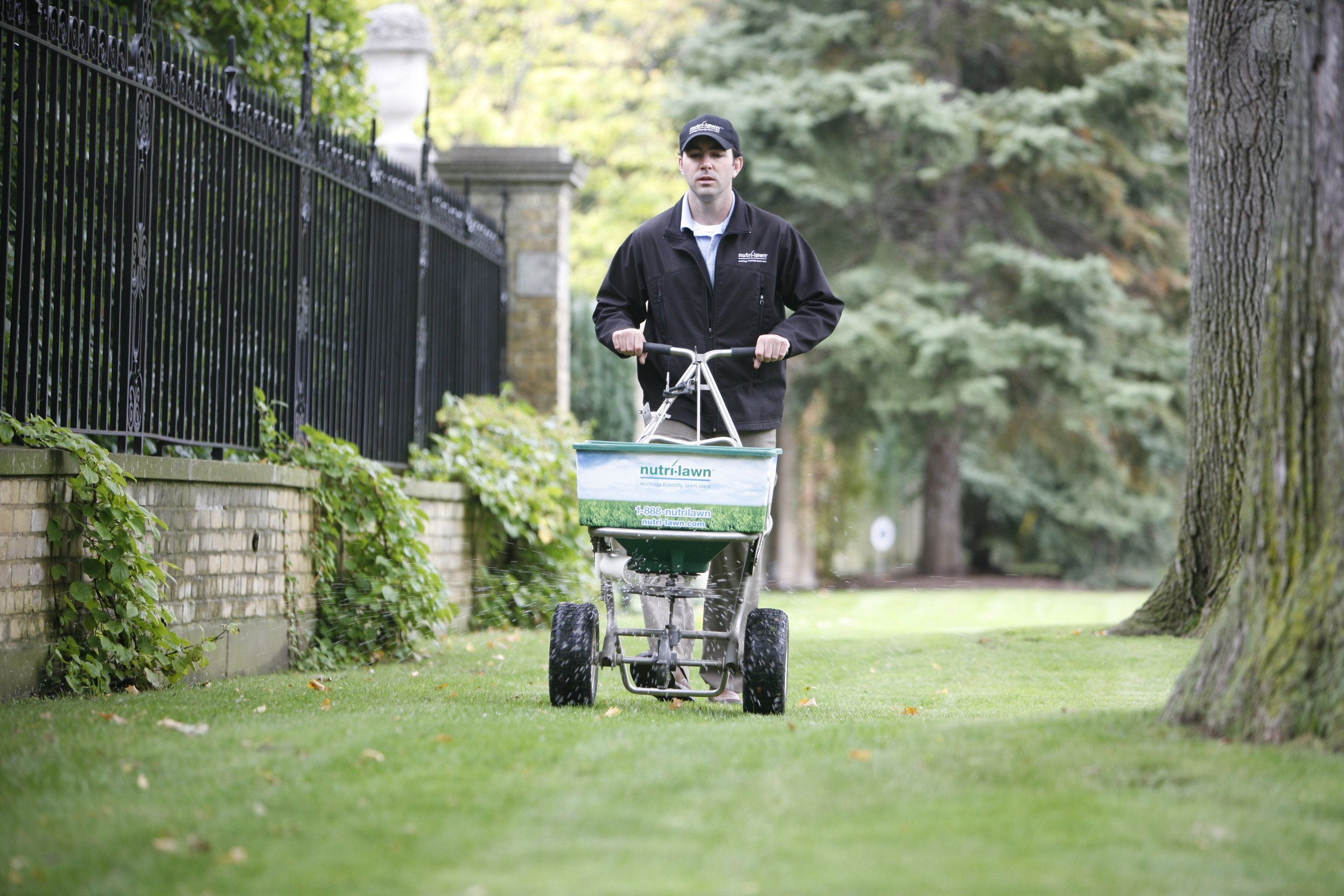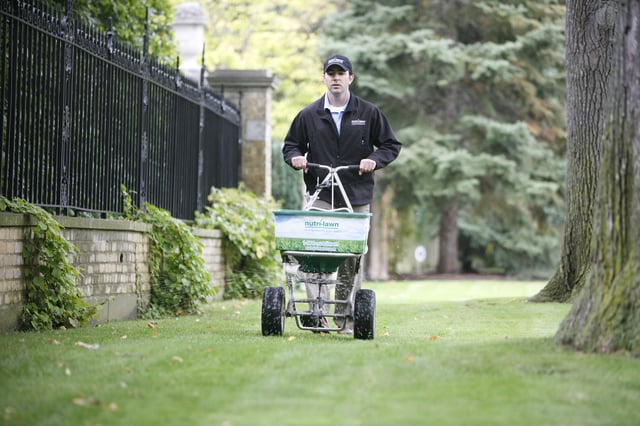3 min read
Fertilize in Spring for the Best Lawn Possible
By: Shawn Karn, The Grass Expert on Apr 18, 2016 4:43:44 PM


When fertilizing in Spring, one of the single most important things you can do for your lawn is to provide it with the plant essential nutrients it requires to grow healthy. Balanced fertility throughout the season ensures the lawn will stay green, thick, healthy, and robust.
Lawn Fertilizing
Fertilizing provides many benefits to the lawn including some of the best visual impacts with relatively minimal effort and expense. Spring fertilization is very important in the overall process of the lawn's fertility requirement. Using a fertilizer blend that contains the 3 major nutrients nitrogen, phosphorus, and potassium (npK) is recommended. These 3 nutrients are required in the greatest quantity by the plant and will have the biggest impact on how the lawn performs.
N-P-K
The 3 major components to a fertilizer blend are nitrogen (n), phosphorus (p), and potassium (K). The n-p-K ratio is also referred to as the analysis. These numbers represent how much of each nutrient is in the blend. for example a fertilizer blend with an analysis of 25-5-10 represents 25% nitrogen, 5% phosphorus, and 10% potassium. nitrogen is required in the greatest quantity and promotes the dark green colour, leaf and blade growth, and density to the lawn. phosphorus is important for root growth and plant establishment. Potassium contributes to the overall general vigor of the plant and strengthens its resistance to wear, drought, disease, and hardiness against winter.
Timing
Fertilizing in the Spring is a great way to jump start the lawn after a long Winter. The essential nutrients provide quick green up and promote important growth not only in the leaf blades, but in the roots as well. Applying fertilizer early on after the ground is unfrozen will help strengthen and prepare the lawn for the summer months ahead.
Application Rate
Fertilizer must be applied equally and evenly across the lawn. It also must be applied at the correct rate based on the time of year and the plants requirement. In general, no more than 1lb of nitrogen per 1000 sq ft should be applied at one time. It is important to accurately measure the total treatment area and only apply the required amount of fertilizer. More is not better; over fertilizing can create a number of problems including stripping, burning, and excessive growth resulting in a weaker plant that is susceptible to pests and disease.
Fertilizer Options
Fertilizer comes in two forms depending on the desired outcome. Quick release fertilizers are designed to provide quick plant response. These products typically last for a short time and require multiple timely applications throughout the season. Slow release fertilizers are designed to release slowly and provide even feeding for long periods of time. These products are generally used over summer months when immediate response is not required. fewer applications are made further apart throughout the season. Some slow release technologies only require one application for the entire season.
Product Selection
Granular spring fertilize is generally the product of choice for both do-it-yourself home owners and professional lawn care companies. This has a lot to do with convenience and ease of handling. Liquid fertilizer is seldom used by comparison.
Equipment
Having the right equipment to do the job makes a big difference. A rotary broadcast spreader is easy to use and most effective dropping the fertilizer from the hopper on a spinning impeller that throws fertilizer in 5 – 10 foot swath. This evenly distributes the fertilizer across the lawn and provides effective application coverage.
Application Technique
When it comes time to spread fertilizer, application technique couldn’t be more important. There are certainly more ways than one to effectively fertilize depending on the equipment being used. The most common technique is to fertilize in straight lines in a back and forth pattern across the lawn. Each pass should include an overlap to help avoid streaks and stripes. A perimeter pass is required around the edges to ensure application is even right to the edges.
Click the button below to download our Spring Lawncare e-Book for more Spring turf tips!



